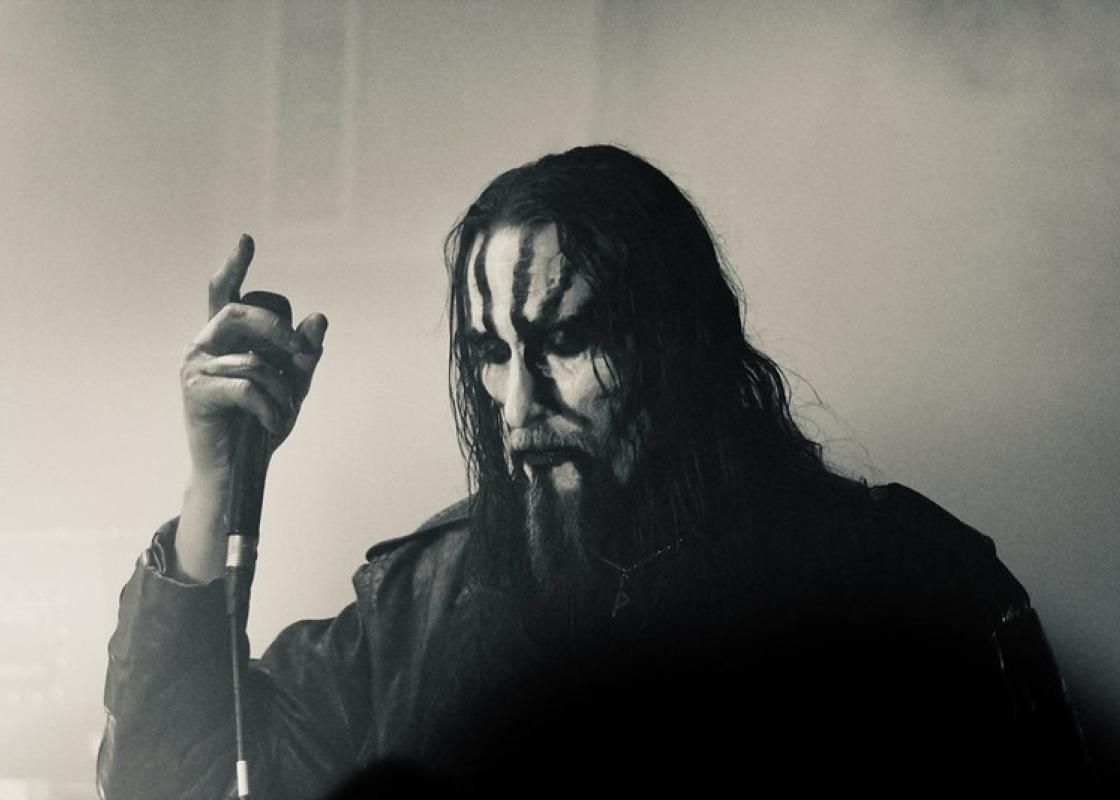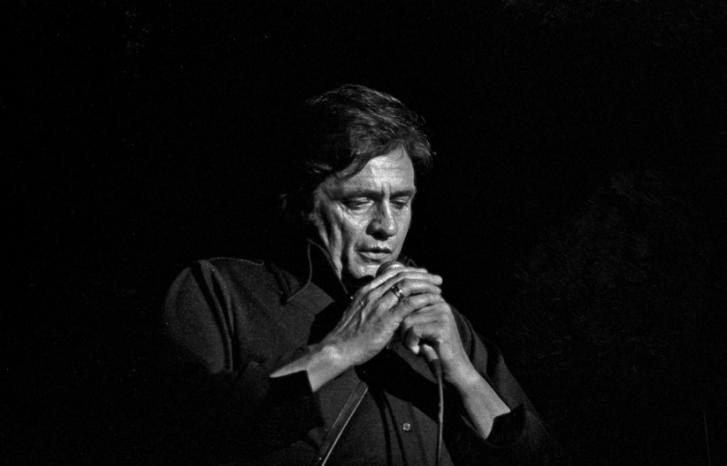Norwegian black metal is perhaps mostly renowned for church fires and oppositional young men wearing corpse-like make-up. In their article “Gaahl-Monster or Postmodern Prometheus?: Masculinity, Class, and Norwegian Black Metal”, recently published in The Bloomsbury Handbook of Popular Music and Social Class, Stan Hawkins and Nina Nielsen explore the expression of maculinity that is typical for the genre.
Untraditional masculinity
The article is an interdisciplinary study of the back metal culture and of how this culture is manifested in the aesthetics of the genre, both in the music and the visual expressions. Nielsen specialises in Norwegian black metal and Hawkins explores popular music and gender in his research.

“We combine these topics in our study. Our approach is analytic and historical, and we base our research on both gender studies and musicology. Our research is thus interdisciplinary,” Hawkins explains. He is professor of musicology at University of Oslo.
“We have collected an enormous amount of material. Both music albums and other publications have formed the material basis for our work. In addition, I have conducted several interviews and observed the milieu over a period of time. We then applied an interpretative approach to our findings,” Nielsen adds. She has written a PhD thesis about the genre at the Norwegian Academy of Music.
The study of masculinity and sexuality in music performance is a central part of Hawkins' research.
“It has been a life project of mine to study how the voice, for instance, can convey various forms of masculinity,” he says.
“It is not really about vocal register. High-key singing may still be masculine and low-key can be feminine. My main approach has been to look at connections between image and sound, the way in which the artists present themselves. Here, the limits for what is perceived as masculine is in flux. Black metal takes part in a renewal of the limits for what may be perceived as masculine.”
“The vocals in black metal is not a classical masculine voice. The singers often sound almost inhuman,” says Nielsen.
“Here, masculinity revolves around something else. To many, it is probably about demonstrating a type of masculine power and strength rather than traditional masculinity.”
According to Nielsen, black metal also has a connection to the glam rock music from the 1970s.
“Men with long hair and make-up represented in a sense a hyper-feminine image. The span between glam rock and black metal shows several interesting developments, given the genre’s hyper-masculine ideal.
Gaahl as a case study
The singer Gaahl, a central figure in Norwegian black metal, is used as an example throughout the article. Gaahl was the frontman of the band Gorgoroth, and was often in the media’s spotlight as a representative for the genre.
“A part of what makes Gaahl so interesting is that he is one of very few openly gay artists in the black metal milieu, both in Norway and internationally. We have taken this into consideration when we have studied his immensely aggressive mode of expression,” says Hawkins.
“He uses indifference as a strategy in his image. He does not play on sex in the ways we are used to from popular music more generally. To us, it has been important to look at how Gaahl’s queerness is addressed in interviews, in the way he dresses and, not least, in his voice.”
The lyrical expression often represents a male strength, and contempt for weakness.
To Gaahl, sexuality is insignificant, and he makes a point out of this. At the same time, however, he expresses his sexuality in a masculine and extreme aesthetic. The researchers have tried to elaborate on this point.
“It is almost impossible to know what Gaahl really means. You cannot necessarily trust everything he says. Everything is an act, all the time,” says Hawkins. He refers to an interview that Ivar Berglin did with Gaahl in a documentary for Vice, in which he simply chose not to answer the questions.
“Almost the entire interview is silent. It is an extremely interesting technique, in which he refuses to fulfil the audience’s expectations. He has power over his own identity.”
Hawkins explains that the relationship between a personal narrative – that is the way in which artists tell stories through their music – and persona – the way in which an artist choose to represent oneself – is a highly complex one.
“I would say that this is the most entertaining thing about popular music. The fans make their own connections between these two elements. Having said that, much of what we write ourselves is of course based on our own interpretation of Gaahl.”
Evolving culture
The black metal culture has been known to promote homophobia and misogynistic attitudes. But the picture is more nuanced than that, according to the researchers.
“There are many black metal milieus out there. Several artists within the culture to which Gaahl is said to belong, which is based in Oslo and Bergen and has been active for more than twenty years, have acquired increasingly liberal attitudes to gender and sexuality. They accept variation,” Nielsen explains.

“At the same time, there are certain groups of fans and artists that have a strictermasculinity ideal.”
According to Nielsen, expressions of homophobia and misogyny were possibly more acceptable in the eighties and nineties, and many artists within the milieus have evolved and altered their ideals and attitudes. Nevertheless, such attitudes are still expressed through the music.
“We have noticed a clear change in attitude, but there is nevertheless no doubt that the genre conveys an extreme form of masculinity. The lyrical expression often represents a male strength, and contempt for weakness,” she says.
“Gaahl reflects this strength by showing that he can be whomever he wants to be. He demonstrates a force through his apparent indifference to what others think of him. This is an important part of the image, which makes him such a central figure within the milieu.”
“His indifference to his own sexuality has made him describe it as an aesthetic aspect of how he performs his music. It is almost as if he refuses to accept that homophobia occurs in the milieu,” says Hawkins.
“Of course this may not be true, but he takes an interesting defensive position through what we have termed ‘narcissistic hyper-masculinity’. He emphasises a masculine ideal in his aesthetics, with himself placed right in the centre.”
Monster and dandy
The masculinity expressed through the extreme music plays with traditional roles. While the artists place themselves in opposition to the mainstream, they are very conscious of their own role.
According to Hawkins, black metal exemplifies an interesting type of dandyism. The term is derived from the word ‘dandy’, commonly used about men who are excessively preoccupied with their own looks and appearance.
“Gaahl uses a lot of make-up and is interested in fashion. At the same time, he is in stark opposition to the more flamboyant image of many other male pop artists who often emphasise colourful outfits and continual change in hairstyle and clothing. It is interesting to compare him to an artist such as Freddie Mercury. The two go in completely different directions, but both are highly stylised figures.”
The researchers have used the term monstrosity to describe Gaahl’s image.
“Here we build upon a study about monsters by Jeffrey Cohen, in which he describes what makes a monster and why monsters are normally men,” says Hawkins.
A masculine ugliness is an aesthetic goal within black metal.
“We tried to apply this in order to understand a central element in Gaahl’s aesthetics. There are some very grotesque details in the ways he performs, from his vocal use to his outfits, make-up and scenography. He has created a monster-based personality, which puts him in a role of opposition. The dramaturgy is an important part of the experience. The extreme and the violent is placed within an aesthetic context.”
The central monster within black metal is Satan, Nielsen explains.
“Many people in the black metal milieu have moved in the direction of a more Old Norse-inspired aesthetics, but Satan is still a central figure. Particularly, perhaps, for Gaahl. For a long time, Gorgoroth was the band that kept closest to the satanic ideology. There is an individualistic strength in the way they interpreted the satanic, in opposition to the Christian general society that they considered weak,” she says.
“Gaahl often presents himself as a sort of semi-god. Many of the themes that he flirts with, such as Old Norse mythology and negation of Christian symbols, flirts with the idea of a pre-Christian ideal
condition. A time in which one was connected to Norwegian nature, and the inherent masculinity and strength had a more prominent position.”
Part of the black metal mode of expression is to let the fans take control of their own identity, according to the researchers.
“A masculine ugliness is an aesthetic goal within black metal. Many talk about the experience as a catharsis, a type of cleansing of the soul in which they experience that their emotions are expressed through the music,” says Hawkins.
“The combination of the musical instruments and the rough vocal style releases something among both artists and audience. It gives vent, both emotionally and physically, although everyone experiences this differently.”
Translated by Cathinka Dahl Hambro.



